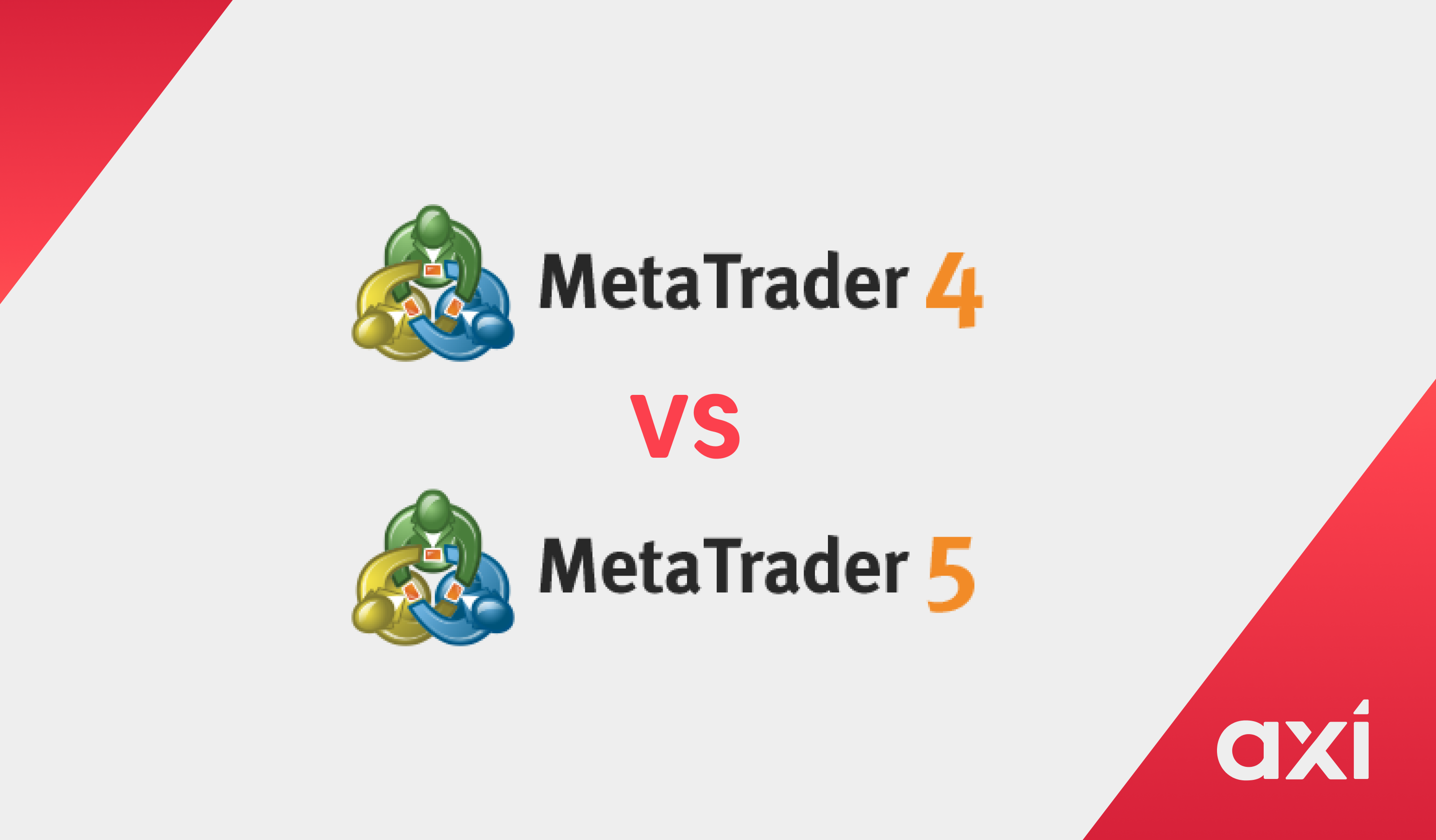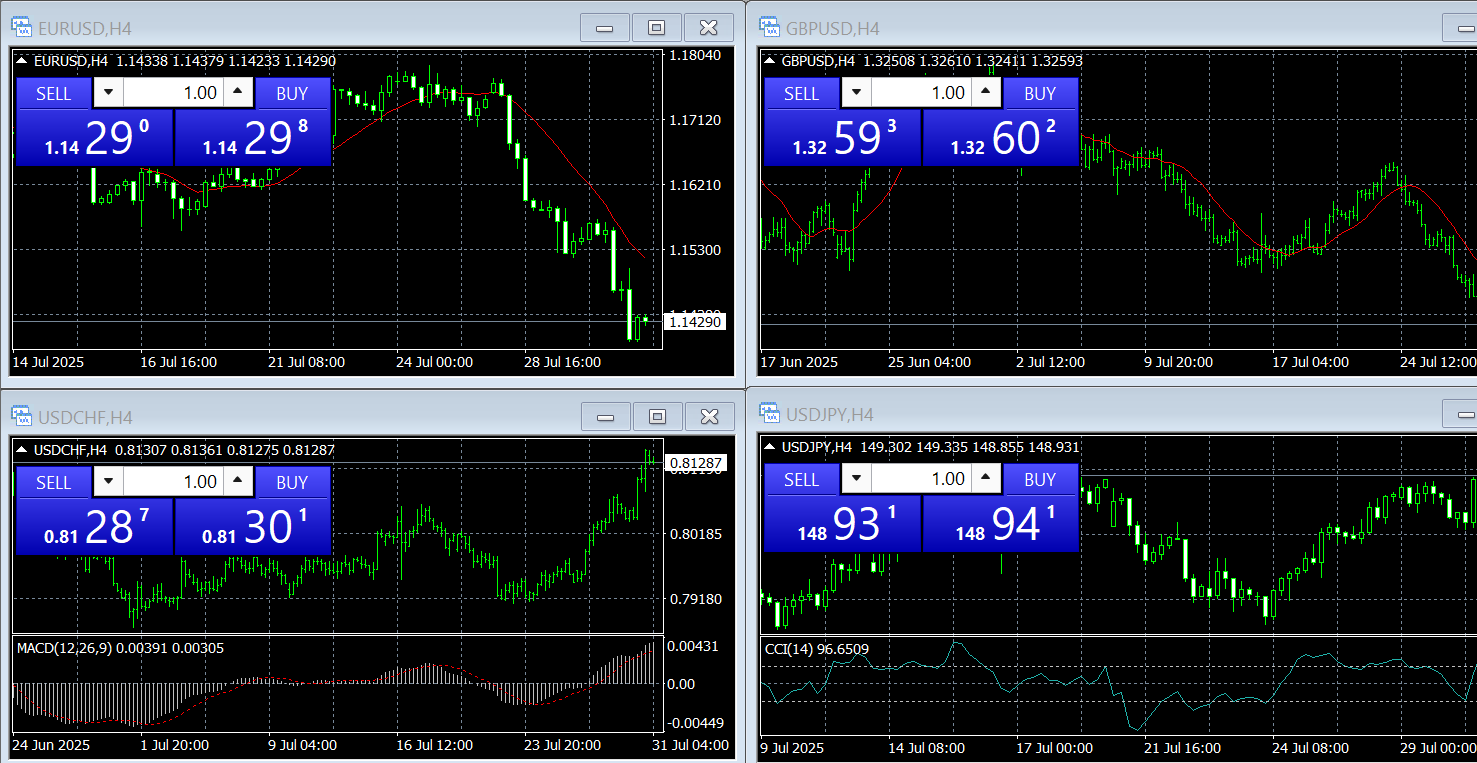
MetaTrader 4 (MT4) is an electronic trading platform developed by MetaQuotes, a Russian software company. MetaTrader 1-3 were released between 2000 and 2002, but it was MT4, which was launched in 2005, that quickly became the most popular trading platform for retail traders around the globe.
During its first years, MT4 was widely adopted by brokers and gained popularity amongst traders due to its ease of use and wide range of tools. MQL4 – a scripting language – enabled traders to create expert advisors, indicators, and scripts, and created a community with a large number of tools that were often shared free of charge.
As retail trading became more accessible, it was important to have a trading platform that was user-friendly and intuitive. MT4 addressed those concerns, while also giving professional traders the opportunity to create and use advanced tools.
The platform itself comes with a wide range of indicators and chart timeframes, but also allows the import of custom indicators and scripts. The MQL4 community is a powerful resource, as it is essentially a treasure of MQL4 documentation, scripts, indicators, and expert advisors, and it also allows users to hire programmers to build custom tools and indicators.
MT4 has proven itself a reliable platform, and can be used as a desktop version, in a web browser, or as a mobile app. Almost every FX/CFD broker in the world supports MT4, which makes it convenient for traders who wish to change or use multiple brokers, as they can manage multiple accounts on a single platform.
Traders using MT4 also benefit from the back-testing capabilities of MT4, as they can test expert advisors and strategies before using them in a live trading environment.
The first step is to download and install MT4. The download link is often provided by brokers after opening either a demo or a live account. MetaQuotes itself is not a broker, so having a broker is required for live trading.
For the mobile version, traders may download the MetaTrader 4 app on the App Store or Google Play. There is only one MT4 mobile app, and it will allow traders to access multiple trading accounts, even if they are with different brokers.
Secondly, it is important to understand the layout of the trading platform. The great thing is that MT4 is heavily customisable. If you prefer to have a clean interface and do not require many of the tools/windows available, you can simply hide them and create an MT4 layout that suits your needs.
Generally, the most important aspects of the MT4 platform are:
The "Market Watch" section, where you see the quotes of all available trading instruments.

The Navigator section allows you to control the accounts that you have (both demo and live), as well as indicators, Expert Advisors, and scripts.

In the centre will be the charting section, where you can have multiple charts stacked together to monitor several markets at the same time. MT4's one-click trading solution allows you to trade directly from the charts, saving time.

At the top will be various charting tools, as well as the menu that allows you to customise MT4.

At the bottom will be the Terminal section, where you can view your open trades, exposure, account history, as well as monitor news, alerts, and emails from your broker.

MT5 is a multi-asset trading platform released by MetaQuotes in 2010, as the successor to MT4. The key difference between the two platforms is that MT5 supports more asset classes, such as stocks.
While MT5 was designed to replace MT4, it still hasn't fully done so, even after well more than a decade since its release. The main reason is that many traders are still comfortable with MT4, and a vast number of resources have been built for that particular platform. This is why many brokers still offer both platforms, rather than completely replacing MT4 with MT5. That being said, MT5 has come a long way, and its market share over MT4 will only grow as MetaQuotes will not sell any MT4 licenses to new customers and has stopped all development work.
MT5 shares a lot of strengths with MT4, in addition to a few more.
The trading platform is offered by a large number of retail brokers, making it easy for traders to switch between brokers without having to download a custom trading platform for each.
It supports a wide range of asset classes, for example, stocks, in addition to CFD products.
MT5 supports a larger number of chart timeframes (21) and features advanced order types, allowing for more flexibility.
The trading platform has a reliable performance and is suitable for high-frequency trading and back-testing strategies.
MT5 also features Depth of Market, which allows traders to see the real-time order book and liquidity levels. MQL5 is more advanced than MQL4 and allows multi-threading.
The first step is to download and install MT5. The download link will be provided by the broker of your choice after you open a demo or a live account. As with MT4, MetaQuotes does not offer live accounts, and you will require a broker to trade the markets.
The mobile version of MT5 is accessible through the App Store or Play Store. The mobile app supports the use of multiple trading accounts, even if they are with different brokers.
The layout itself will appear similar to MT4:
Details |
MT4 |
MT5 |
| Released | 2005 | 2010 |
| Programming language | MQL4 | MQL5 |
| Available markets | Primarily Forex and CFDs | Multi asset class (including stocks, ETFs, and bonds) |
| Built-in indicators | 30 | 38 |
| Built-in chart timeframes | 9 | 21 |
| Order types | 4 | 6 |
| Depth of market | No | Yes |
| Economic calendar | No | Yes |
| Strategy testing | Single threaded | Multi-threaded |
| Community | MQL4 (vast number of resources and tools) | MQL5 (growing) |
| Availability at brokers | Widely offered (unless the broker is newly established) | Widely offered |
| Web browser platform | Available | Available |
| Mobile app (iOS/Android) | Available | Available |
| Hedging | Supported | Supported |
| Development | No new features will be released – development has stopped | Active development |
MT4 is still a very popular trading platform, and MT5 has not been able to fully replace it yet, which is why many brokers still offer both platforms.
A big factor is that many traders got used to MT4 and continue using it out of convenience and habit. Particularly, traders who specialise in forex trading, as the multi-asset class feature of MT5 does not really benefit them.
MT4 has existed since 2005, and the MQL4 community has a vast number of resources, from indicators to EAs and educational material. This is another factor why traders like to stick to MT4, especially if the tools that they are using were specifically designed for MT4 and might not be supported in MT5.
The advantage of MT5 over MT4 is that MetaQuotes focus is now fully on the development of MT5, meaning it is a future-proof trading platform.
It supports multi-asset trading, which allows traders access to more instruments, and has more built-in timeframes and technical indicators.
MT5 also offers more tools compared to MT4, such as the Depth of Market (DOM), which remains unavailable in MT4.
The platform also offers more order types compared to MT4 (6 vs. 4), with buy stop limits and sell stop limits giving traders more flexibility.
Strategy testing is more advanced in MT4 as it has a multi-threaded strategy tester.
There is no clear answer to this question, and it will depend on the trader and their needs.
MT4 will be perfectly fine for beginners, traders who only need forex pairs, or traders who are using an EA or tools that were developed specifically for MT4.
MT5 will be more suitable for traders who wish to trade a wide range of asset classes or who need advanced back testing capabilities, or have a greater need for tools such as Depth of Market.
MetaTrader 4 and 5 are both widely used trading platforms. Despite MT5 being rolled out in 2010, MT4 remains popular, and many brokers continue to offer it. Which trading platform to use will largely depend on the needs of a trader. While some continue to use MT4 purely out of habit, others are using scripts and indicators that were custom-built for MT4 or prefer the simplicity of MT4.
Despite that, the market share of MT5 will continue to grow as MetaQuotes has phased out the selling of MT4 licenses to new customers and ended development of the MT4 platform. Traders will benefit from more advanced features that are not available in MT4, such as Depth of Market, as well as more order types and more timeframes & built-in indicators.
Ready to trade your edge?
Join thousands of traders and trade CFDs on forex, shares, indices, and commodities!
This information is not to be construed as a recommendation; or an offer to buy or sell; or the solicitation of an offer to buy or sell any security, financial product, or instrument; or to participate in any trading strategy. It has been prepared without taking your objectives, financial situation and needs into account. Any references to past performance and forecasts are not reliable indicators of future results. Axi makes no representation and assumes no liability with regard to the accuracy and completeness of the content in this publication. Readers should seek their own advice.
FAQ
It will largely depend on the needs of the user. A trader with advanced back testing needs and/or trading multiple asset classes will prefer MT5.
No. MT4 uses MQL4, and MT5 uses MQL5. Indicators and EAs will generally have to be rewritten to work on the other platform.
No, there is no news of MT4 being discontinued, but MetaQuotes has stopped selling licenses to new customers in 2018, and no new features will be added.
Traders will generally find MT5 preferable as MQL5 has better back testing capabilities.
Both platforms can be downloaded as a desktop or mobile version and can be accessed through the web browser (MT4/5 Web).
